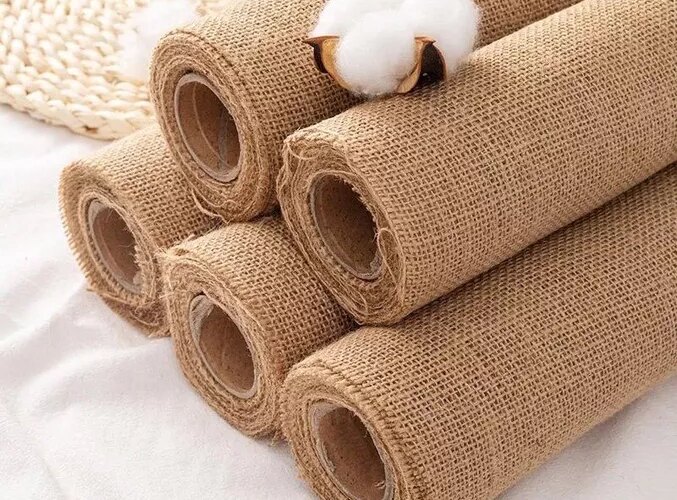Have you heard of jute fabric? It’s a rustic fabric becoming a new fashion trend due to its beauty, durability, and environmental friendliness. Let’s discover what jute fabric is and its advantages and disadvantages.
1. What is jute fabric?
Jute is a type of fabric that is produced from fibers derived from the jute plant. The jute plant produces two main types of jute fibers: white jute (Corchorus olitorius) and tossa jute (Corchorus capsularis). These jute fibers are completely natural and are commonly used for weaving jute fabric.
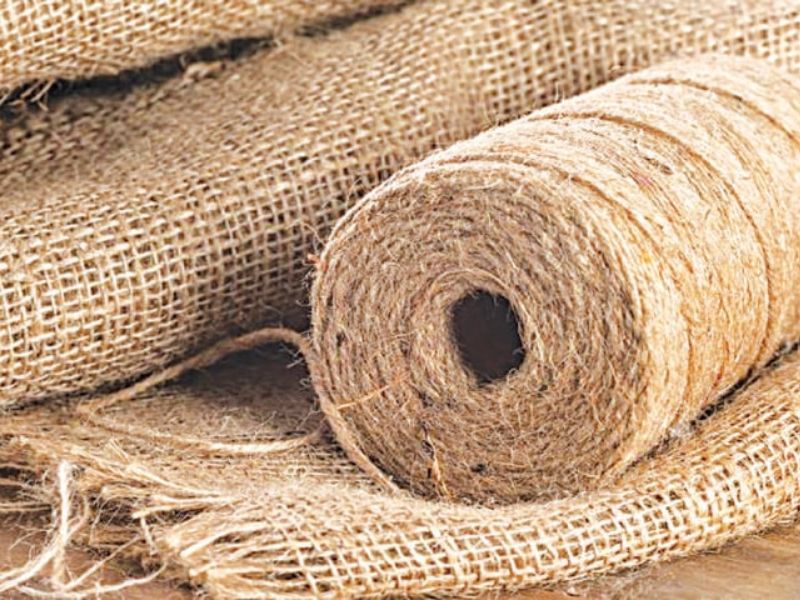
Discover the intricacies and characteristics of jute fabric.
Jute fabric, despite its rough surface and lack of softness compared to other fabrics, offers a unique blend of coolness and comfort to the user. Additionally, it possesses exceptional properties, including anti-static qualities, efficient heat conduction, and effective moisture absorption. These advantageous traits make jute fabric highly sought-after for various bag production, ranging from plastic bags to paper bags.
Categorization of jute fabric.
Jute fabric is produced from the fibers of the jute plant, a 100% natural material. This versatile fabric comes with numerous benefits, including its cooling and comfortable properties, its ability to resist static electricity, its efficient heat conduction, and its excellent moisture absorption capability. In contemporary times, there exists a wide range of jute fabric varieties that are commonly employed for various purposes, each possessing its unique characteristics and applications.
- White jute fabric: Woven from the stalk of the white jute plant, white or off-white in color. This is a popular material for making traditional clothes in India, however, its durability is not high.
- Tossa jute fabric: Jute is best known for its high strength and durability, which gives the product a long life. Tossa jute fibers are brown in color and longer than other types.
- Mesta jute fabric: A hybrid fabric between white jute and Tossa jute, with a neutral, soothing color.
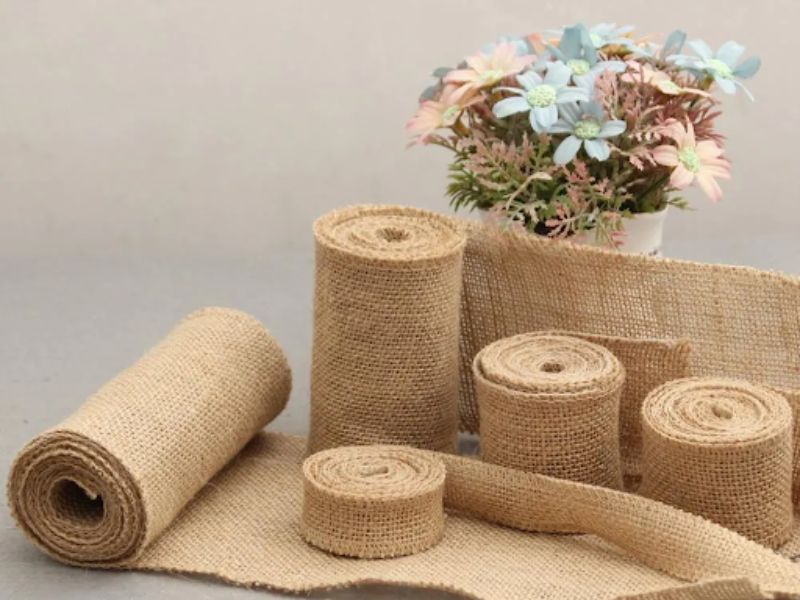
The present classification of jute fabrics that are widely used today.
Furthermore, besides the commonly known jute fabrics, there exist various other types of jute textiles, including:
- Raw jute fabric: Rough surface, often used to make bags or carpets.
- Fine jute fabric: Softer surface, suitable for sewing clothes.
- Jute blend fabric: Combine jute with other fibers such as cotton or polyester to create new materials with their own advantages.
Pros and cons of using jute fabric.
3.1. Advantages
Jute fabric is created by weaving fibers made from the jute plant, which is a commonly grown crop in various regions, particularly in tropical areas. Due to its natural source, this fabric possesses numerous remarkable advantages in comparison to synthetic fabrics. Many individuals appreciate jute fabric for its numerous benefits, including:
- Durable: Jute fibers are longer and more tightly bonded than other natural fibers, giving the product high durability. Therefore, clothing, fashion accessories or items made from jute fabric can be used for a long time without worrying about fraying or damage.
- Environmental friendliness: Jute fabric is completely biodegradable in the natural environment, not polluting the environment like synthetic fabrics. This is a big plus for those who care about protecting the environment.
- Wide applicantion: Jute fabric is not only used to make clothes but also applied in many other fields such as interior decoration, fashion accessories, industrial supplies…
- Good price: Compared with other natural fibers such as silk,… the price of jute fabric is much cheaper.
- Good moisture absorption: Jute fabric has high moisture absorption capacity, helping users feel comfortable and cool when wearing on hot days.
- High breathability: The structure of jute fabric allows air to circulate easily, creating a feeling of ventilation and comfort for the user.
- Jute fabric is resistant to mold, bacteria and antistatic.
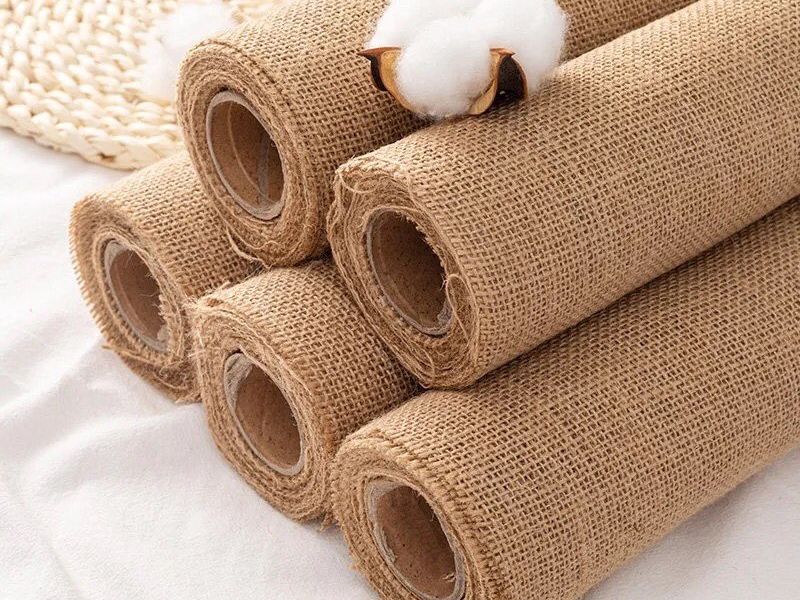
Jute fabric has gained popularity among many individuals due to its exceptional durability, breathability, and environmentally-friendly characteristics.
3.2. Disadvantages
In addition to its exceptional benefits, this fabric does have a few drawbacks worth mentioning.
- Rough surface: Jute fabric has a rougher surface than other fabrics, so it is not used for making clothes regularly.
- Wrinkle prone: Jute fabric is more prone to wrinkling than other fabrics, so regular ironing is required to keep the product looking good.
- Long dry: If it absorbs water, jute fabric will take a long time to dry. To overcome this disadvantage, you should only clean and iron clothes, accessories or items on sunny days to ensure they are dry.
- This type of fabric has a rough surface, which somewhat reduces the aesthetic value. Moreover, when the skin comes into contact with the fabric, it can easily cause itching and irritation.
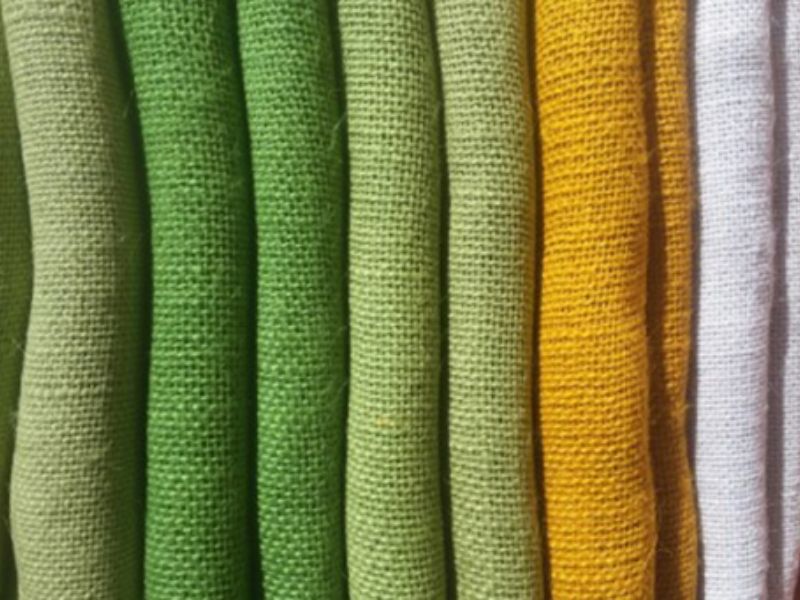
One drawback of jute fabric is that it tends to be stiff and rough to the touch. This stiffness and roughness can potentially lead to itching and even harm the skin if it comes into direct contact with it.
Common uses for jute fabric include bags, rugs, curtains, upholstery, and wall coverings.
Jute fabric is a versatile material that finds a wide range of applications in various aspects of daily life. It is extensively used for sewing clothes, producing bags, and manufacturing everyday items. Despite having a few drawbacks such as its tendency to wrinkle easily and shrink, jute fabric continues to be widely popular in numerous fields due to its many benefits. It is highly valued for its strength, durability, and eco-friendly characteristics. Jute fabric plays a crucial role in the creation of practical and useful products, enriching our lives in countless ways.
3.1. Costumes
Rough jute fabric has limited use in making regular clothing due to its tendency to cause itching and skin irritation. However, when processed, the rough texture of jute is transformed into a soft fabric, making it suitable for designers to create unique fashion collections. The versatility of jute fabric can be seen in various outfits such as jackets, shirts, t-shirts, and dresses, which not only provide comfort and coolness but also allow individuals to express their personal style and personality. Additionally, incorporating jute fabric in clothing enhances the beauty of the wearer, adding a touch of uniqueness to their overall look.

Costumes made from jute fabric, a type of natural fiber derived from the jute plant, gained significant popularity and were showcased on numerous fashion runways. The unique aesthetic and eco-friendly appeal of jute fabric contributed to its frequent appearance in the fashion industry. Designers embraced this trend and created stunning outfits using this sustainable material. The use of jute fabric in fashion demonstrates a growing interest in incorporating environmentally conscious materials into high-end designs.
3.2. Fashion accessories
Jute fabric is highly durable and has excellent load-bearing capacity, making it a perfect option for manufacturing various types of bags. These bags range from simple and practical designs to high-end fashion bags, offering a wide range of choices to cater to different users’ preferences. Jute bags have gained popularity among fashion enthusiasts due to their visually appealing designs, eco-friendliness, and remarkable resilience.
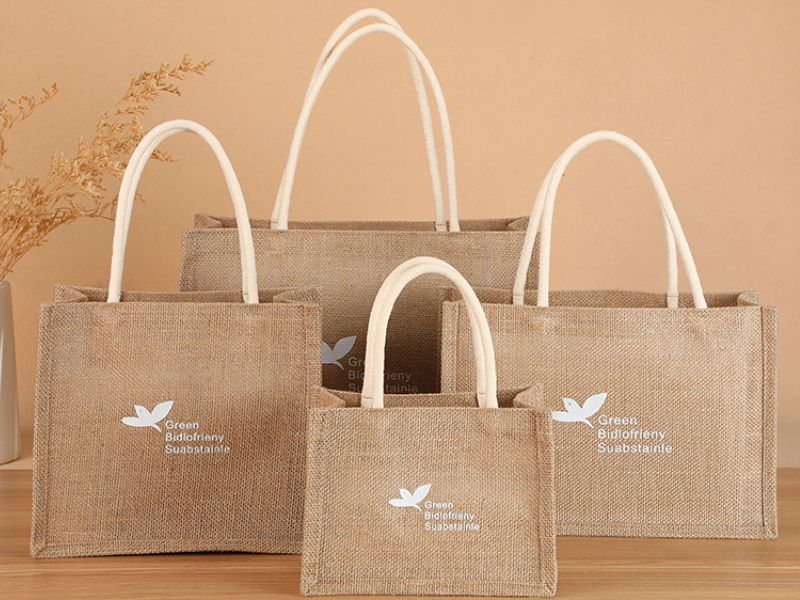
Canvas bags made from jute fabric are highly popular and favored by a multitude of individuals. The unique combination of durability and aesthetic appeal makes these bags a preferred choice among many consumers. Jute, a natural and sustainable material, lends an eco-friendly aspect to these bags. The versatile nature of canvas allows for various designs and patterns to be incorporated onto the bags, further enhancing their visual appeal. In addition, the sturdy construction of these bags ensures their longevity, making them a reliable and practical option for everyday use. With their growing popularity, canvas bags made from jute fabric have become a beloved accessory for individuals from diverse backgrounds and lifestyles.
3.3. Industrial supplies
Jute fabric, apart from being widely used in the fashion and accessories industry, also finds application in the manufacturing of ropes and burlap sacks due to its excellent durability and preservation properties. These items are commonly employed for storing rice, fruits, and goods, and are also effective insulation materials. Jute fabric is highly favored for the production of carpets, curtains, pillowcases, and wall paintings, as it adds a touch of rustic and luxurious beauty to the interior space.
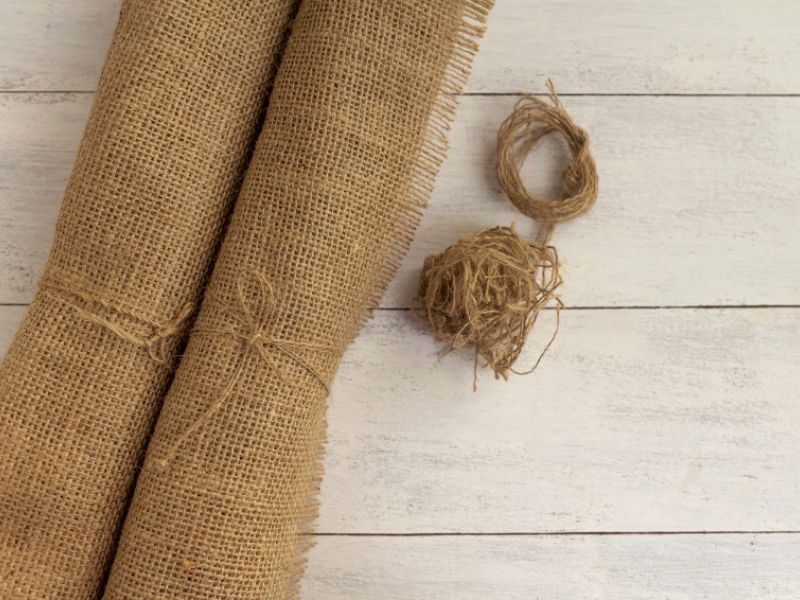
There are various other jute items available apart from the ones mentioned.
Follow these steps to clean and maintain jute fabric in the best possible way.
Jute fabric is highly favored for its rustic, simple, and eco-friendly aesthetic. However, in order to maintain the durability and pristine appearance of jute products, it is important to adhere to specific cleaning and preservation guidelines.
- Clean jute fabric with a damp cloth, wipe it lightly, then hang it in the wind to dry. Apply to light stains. For stubborn stains, dilute soap with warm water and scrub gently with an old toothbrush. Avoid using a rough brush because it can easily tear the fabric. Then, wash and dry.
- Store jute items and clothing in dry, cool places, away from direct contact with floors, damp places, and sunlight.
- Avoid placing jute near flammable or high heat sources.
- Do not use strong detergents as they may damage the fabric.
- Do not wring or twist the product after washing.
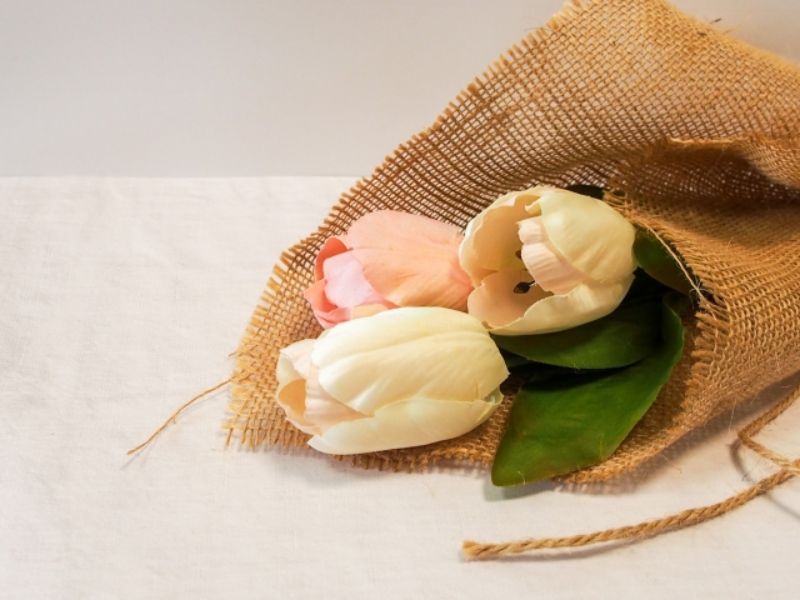
Here are some detailed notes on how to effectively clean and preserve jute fabric to maintain its durability and keep it looking new:
1. Regular Vacuuming: Use a handheld vacuum or a brush attachment to remove any loose dirt or debris from the jute fabric. This step helps prevent the dirt from settling into the fibers and causing damage over time.
2. Spot Cleaning: For small stains or spills, act quickly to prevent them from setting into the fabric. Gently blot the affected area with a clean, dry cloth to absorb as much of the stain as possible. Avoid rubbing, as this may spread the stain or damage the jute fibers.
3. Mild Cleaning Solution: For more stubborn stains or general cleaning, create a mild cleaning solution by mixing a small amount of gentle detergent with lukewarm water. Test the solution on a small, inconspicuous area of the jute fabric first to ensure it does not cause any discoloration or damage.
4. Gentle Cleaning Process: Dip a soft cloth or sponge into the cleaning solution, wring out any excess liquid, and gently dab the stained or soiled area without rubbing. Continue to blot until the stain is removed or the area is clean. Be cautious not to saturate the jute fabric, as excessive moisture can lead to mold or mildew growth.
5. Drying: After cleaning, allow the jute fabric to air dry completely in a well-ventilated area. Avoid exposing it to direct sunlight or heat sources, as this can cause fading or shrinking. It is important to ensure the fabric is completely dry before using or storing it to prevent musty odors or moisture-related damage.
6. Preventive Measures: To protect the jute fabric from spills and stains, consider using fabric protectors or sealants specifically designed for natural fibers like jute. These products create a barrier that repels liquid and makes spills easier to clean.
7. Regular Maintenance: Regularly brush or gently shake the jute fabric to remove any dust or dirt that may have accumulated. This helps prevent these particles from embedding themselves in the fibers, preserving the fabric’s appearance and prolonging its lifespan.
By following these detailed steps, you can effectively clean and preserve your jute fabric, ensuring its durability and keeping it looking as good as new for a longer period of time.
By following the aforementioned tips and guidelines, you can ensure that your jute products remain durable and long-lasting.
The provided information is a comprehensive summary of what jute fabric is, including its advantages and disadvantages, as well as its various applications in the fashion and manufacturing industries. This detailed knowledge about jute fabric will enable you to utilize it appropriately in your everyday life. To stay up-to-date with the latest information, be sure to follow the News section of Fashion Bandung.
To explore further, please refer to the following additional information:

